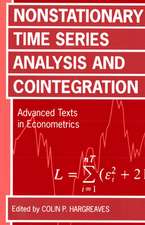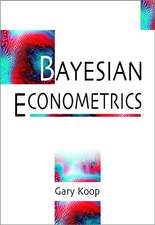Mathematics for Economists: An Integrated Approach
Autor E. Roy Weintrauben Limba Engleză Paperback – 2 mar 1983
Preț: 380.34 lei
Nou
Puncte Express: 571
Preț estimativ în valută:
72.78€ • 77.82$ • 60.68£
72.78€ • 77.82$ • 60.68£
Carte tipărită la comandă
Livrare economică 18 aprilie-02 mai
Preluare comenzi: 021 569.72.76
Specificații
ISBN-13: 9780521287692
ISBN-10: 0521287693
Pagini: 196
Ilustrații: 1
Dimensiuni: 152 x 228 x 15 mm
Greutate: 0.27 kg
Editura: Cambridge University Press
Colecția Cambridge University Press
Locul publicării:New York, United States
ISBN-10: 0521287693
Pagini: 196
Ilustrații: 1
Dimensiuni: 152 x 228 x 15 mm
Greutate: 0.27 kg
Editura: Cambridge University Press
Colecția Cambridge University Press
Locul publicării:New York, United States
Cuprins
Preface; 1. Real numbers; 2. Functions from R to R; 3. R2 and Rn; 4. Functions from Rn to R; 5. Functions from Rm to Rn: the linear case; 6. Differentiable functions from Rm to Rn; 7. Square matrices; 8. Stability of linear dynamic systems; 9. Quadratic forms; 10. Concave, convex, and homogeneous functions from Rn to R; 11. Optimization (I); 12. Optimization (II); Additional exercises; Bibliography; Index.














